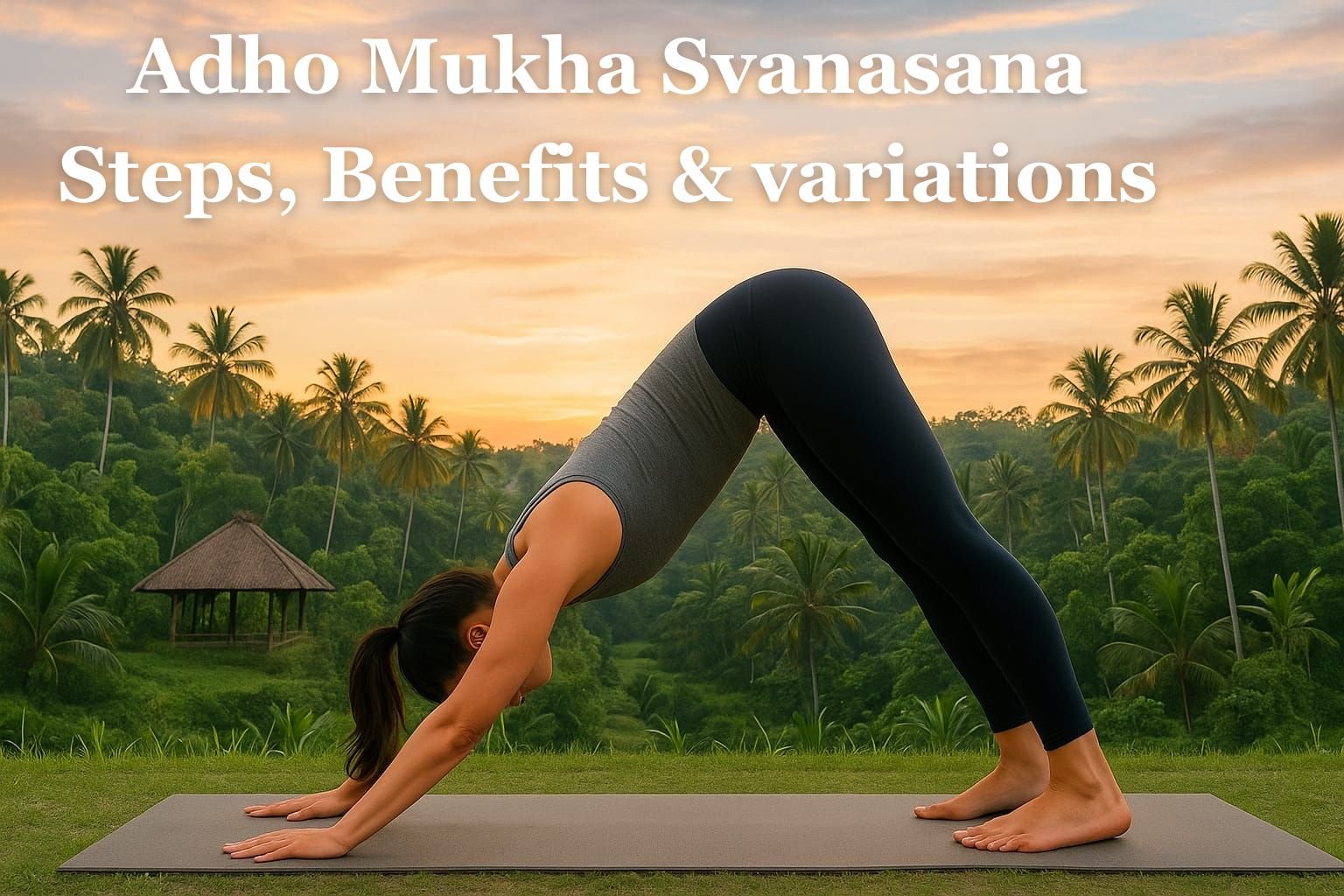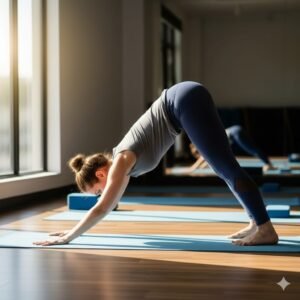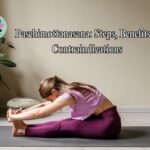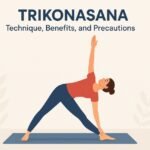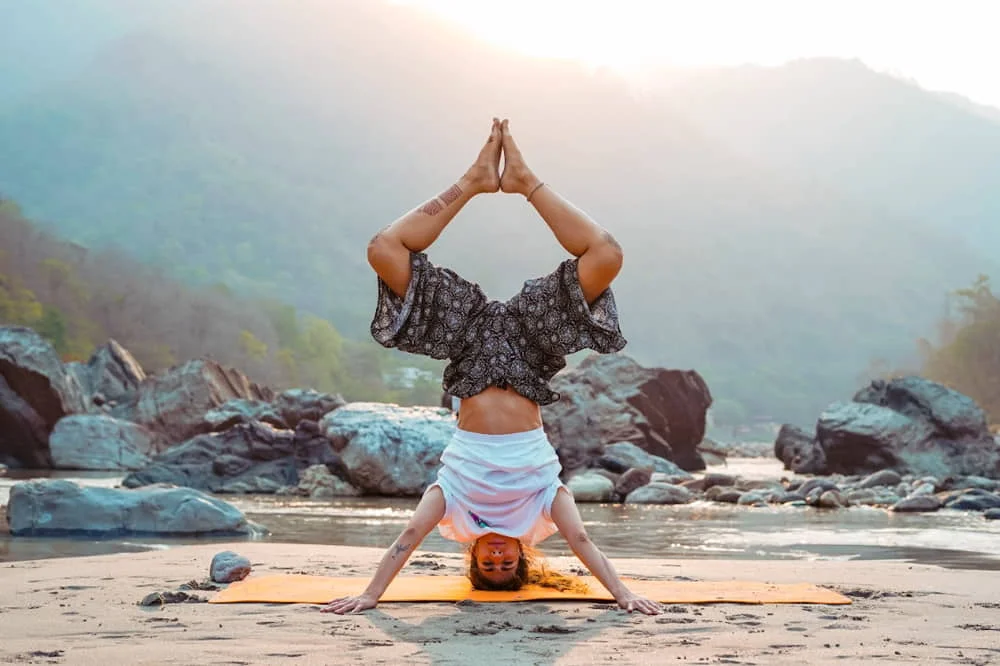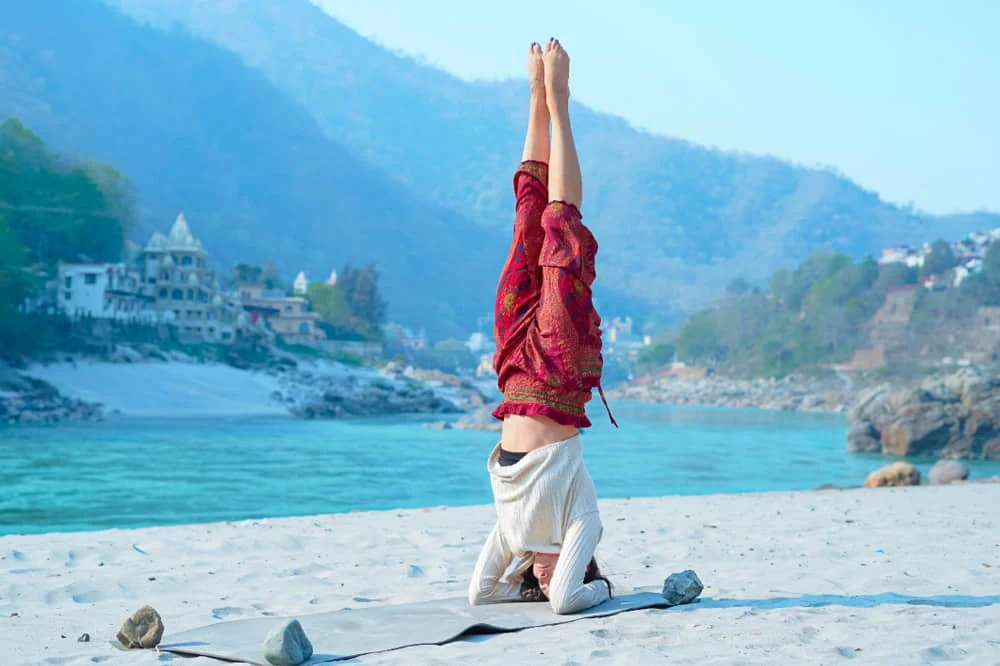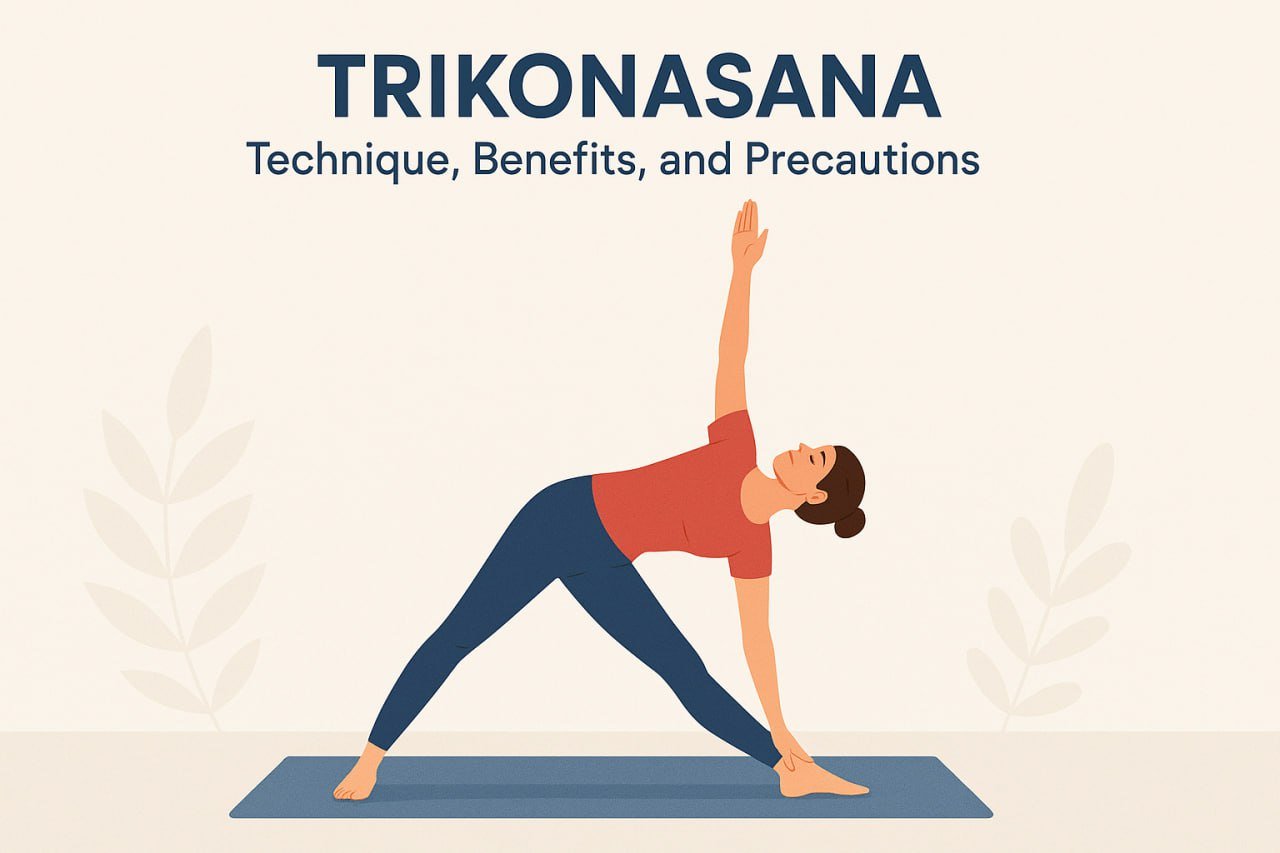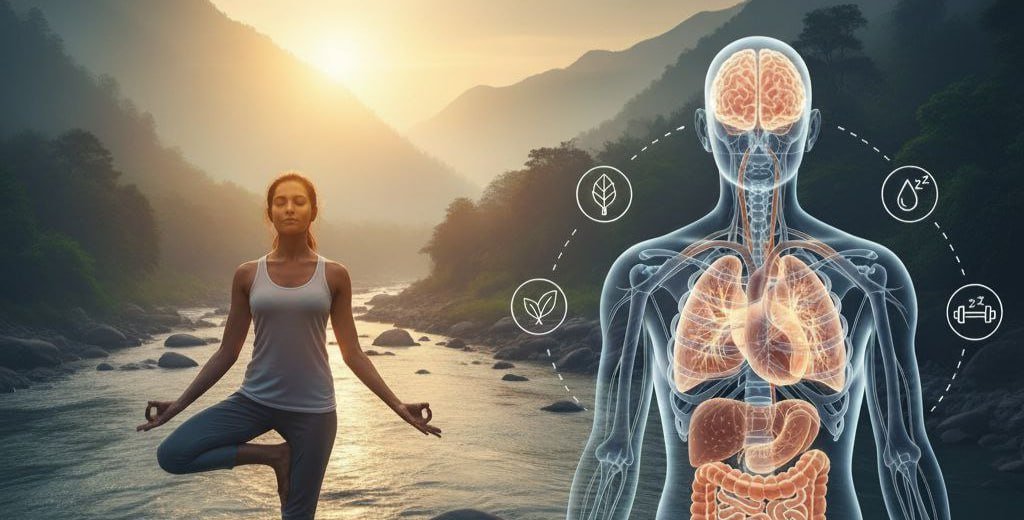Introduction:
Adho Mukha Svanasana, or Downward Dog Pose: The Downward Dog Pose is one of the most popular and commonly known yoga poses in the world. Easy Pose – Downward-Facing Dog. Simple yet powerful, the classic yoga posture strengthens the body, calms the mind, and serves as a preparation for more advanced yoga practice.
In this blog, we explore Adho Mukha Asana (Downward Dog Pose), one of yoga’s most essential and widely practiced postures. You’ll learn what Adho Mukha Asana is, receive step-by-step instructions on how to practice it, gain beginner tips, and discover the key benefits for both body and mind. The blog also covers variations and preparatory and follow-up poses, along with important contraindications. Additionally, it highlights how Mira Yogashala in Bali, recognised as one of the best yoga schools in Bali, guides students to deepen their practice of this pose in a serene, natural environment.”
What is Adho Mukha Svanasana?
The Sanskrit name comes from:
- Adho = Downward
- Mukha=Face
- Svana=Dog
It is similar to a dog stretching forward, and so is known in English as the Downward Dog Pose or Dog Yoga Pose. Moreover, It is a good pose for beginners and an essential component of sequences such as the Surya Namaskar (Sun Salutation)
How to DO Adho Mukha Svanasana Step by Step
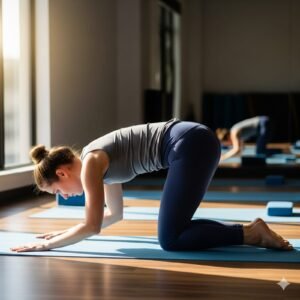
- Start in a tabletop position, on your hands and knees.
- Roll your fingers open and press down through the entire palm of your hand.
- Tuck your toes, exhale, and lift your hips to an inverted “V” position.
- Feet are hip-width apart, and heels are pressing down toward the floor.
- Lengthen your spine, relax your head between your arms, and gaze toward the navel.
- Keep the downward dog position for 5–10 breaths, then return to the table pose.
In addition, remember to keep your breathing steady while holding the posture.
Tips for Beginners
- Loosen your arms, calves, and hamstrings before you even try this posture.
- Leave a tiny knee bend if the hamstrings feel tight.
- Put your hands a bit wider apart if you have stiff shoulders.
- Keep practicing to increase flexibility and strength over time.
Benefits of Adho Mukha Svanasana:
The benefits of the downward-facing dog go beyond just a stretch. This asana offers:
- Stretching of the back and better posture
- Increased tone in arms, shoulders, legs, and feet.
- Improved blood and energy circulation in the whole body
- The blue whale reclaimed more air by enlarging its chest.
- Eases fatigue, slight headaches, and tension
- Increased flexibility in the hamstrings and calves
- Soothes the nervous system
Variations of Adho Mukha Svanasana:
- Bent-Knee Downward Dog: If you have tight hamstrings or back pain
- Downward Dog With a Wall: For beginners with tight shoulders or hamstrings, this variation offers a gentle alternative.
- Heels Against a Wall: Provides extra grounding and support.
Preparatory and Follow-Up Poses:
Preparatory Poses:
- Cat-cow Pose (Marjariasana & Bitilasana)
- Plank Pose
- Standing Forward Bend (Uttanasana)
Follow-Up Poses:
- Dolphin Pose (Ardha Pincha Mayurasana)
- Four-Limbed Staff Pose (Chaturanga Dandasana)
- Upward-Facing Dog Pose (Urdhva Mukha Svanasana)
Contradictions:
Do not practice Adho Mukha Asana in case of:
- High blood pressure
- Carpal tunnel syndrome
- Recent shoulder, wrist, or ankle injury
- Eye issues like retinal problems
- Severe diarrhea or dizziness
Practice Adho Mukha Asana at Mira Yogashala, Bali
At Mira Yogashala, which is one of the best yoga schools in Bali, students are taught how to practice Adho Mukha Svanasana with proper alignment, mindful breathing, and awareness. In the Peace of Bali, this yoga pose is no longer simply a physical phenomenon; it’s a journey that requires strength, equilibrium, and serenity. Whether you are a beginner or an experienced yogi, Mira Yogashala is the ideal place to expand your knowledge and experience the genuine spirit of yoga.
Conclusion:
Adho Mukha Asana is more than a transition pose; it’s a practice in its own right. Whether you’re a complete newbie left wondering what a downward dog is or an advanced yogi who zips through sequences like they’re nothing, this dog yoga pose will ground and lift your body, free your mind, and focus your breath. Regularly practising the pose will have it act as an anchor, which goes on to support your entire yoga journey.
FAQs on Adho Mukha Asana
Q1. What is Adho Mukha Asana?
Adho Mukha Svanasana, or “downward dog pose,” is one of the basic yoga poses, which resembles a dog leaning forward, creating an inverted V shape.
Q2. How do you perform the downward dog yoga position?
Begin on hands and knees, with toes tucked under; exhale as you lift your hips up and back. Keep your arms and legs straight, creating an inverted “V.” Let your head relax and breathe deeply into the stretch.
Q3. What are the benefits of the downward-facing dog?
It tones the arms, shoulders, and legs; stretches the spine; improves circulation throughout your body, balancing the unity of your body and mind; and provides relief for mild headaches, stress & fatigue.
Q4. Who should avoid practicing Adho Mukha Asana?
People with high blood pressure, wrist or shoulder injuries, carpal tunnel syndrome, or retinal issues should avoid this asana.
Q5. How long should you hold Adho Mukha Asana?
Beginners can hold the pose for 3-5 breaths, while intermediate to advanced practitioners can remain in the pose for 1-3 minutes or more, depending on what feels comfortable and stable.
Q6. Can beginners do the dog yoga pose?
Yes. If you are a beginner, you can slightly bend your knees, use props such as blocks or a wall, and focus on alignment rather than pressing your heels to the floor.
Q7. What yoga poses prepare you for Adho Mukha Asana?
You can start with the cat-cow pose, plank pose, standing forward bend, and Dandasana to warm up your back, shoulders, and hips.
Q8. What are the follow-up poses after the downward dog?
Dolphin Pose, Chaturanga Dandasana, and Upward-Facing Dog Pose are popular secondaries.

